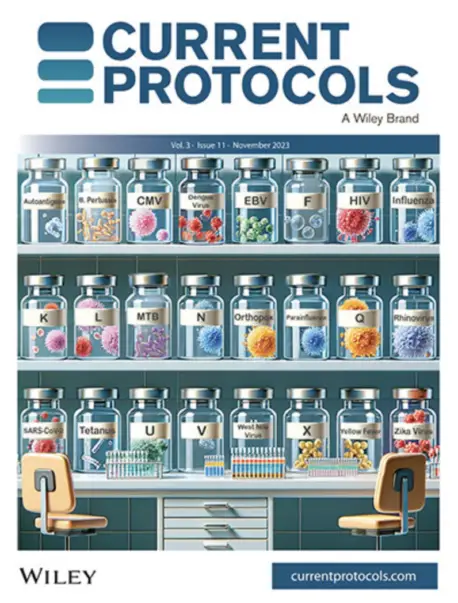Adam Abawi is a research technician at La Jolla Institute for Immunology (LJI). That means he is one of the many scientists assisting with the day-to-day experiments that lead to immune system breakthroughs. Abawi is also a skilled graphic designer—and he’s found interesting ways to combine the two fields.
What do immunologists and graphic designers have in common? As Abawi explains, they both strive to make sense of complicated concepts. “I aim to bridge the gap, helping outside observers understand immunology—and science in general—more effectively,” he says.
Abawi was a senior at Cal State Long Beach when he took a course in immunology and couldn’t wait to learn more about the field. “The science behind immunology is more complex and interesting than any other topic I’ve encountered,” says Abawi.
Complex is right. Every immune cell is a churning metropolis of proteins. Busy proteins move through the cell to do different jobs. Want to track their activity? Good luck. There are more proteins in a cell than people on the island of Manhattan.
“It’s by far the most fascinating biological field I could have chosen,” Abawi adds.
So Abawi counts himself lucky to work closely with LJI Instructor Ricardo Da Silva Antunes, Ph.D., an immunologist dedicated to shedding light on how the immune system’s T cells respond to dangerous viruses and bacteria. In this role, Abawi gets hands-on experience in immune system research—and a chance to develop his graphic design skills.
Creating cover art

When scientists complete a study, they write a scientific manuscript to share the results. If the research findings are especially interesting, scientific journal editors might run the study as a journal’s main cover story. Cue shouts across the lab of, “We got the cover!”
For two recent studies, Abawi’s colleagues were asked to submit cover art to accompany their studies. That’s when Abawi’s love of graphic design came in handy.
The first study was a close look at how human T cells respond to the entire proteome of B. pertussis (the bacterium that causes whooping cough). The LJI findings shed light on potential targets for next-generation pertussis vaccines.
For this study’s journal cover, Abawi reached for a metaphor to communicate the findings. He designed a graphic showing puzzle pieces forming a shield, which represented the different elements that make up the immune system’s adaptive defenses. Abawi designed two vaccine syringes that cross behind the shield, which represent offensive immune protection against B. pertussis.
“The goal was to synthesize the message of the paper into something eye-catching and appealing for audiences,” says Abawi.
Abawi’s cover design was published as the cover of Cell Host & Microbe in August 2023. “That was my first cover, and amazingly, we got a second cover published soon after,” says Abawi.
Harnessing AI in art
Abawi mainly uses the Adobe programs Illustrator and Photoshop for his design work, but he was eager to experiment with generative AI when this second cover art opportunity came around. Abawi thought AI would be helpful because this cover would be a bit more visually complex than the first one.

The cover would accompany a study from da Silva Antunes and LJI Professor Alessandro Sette, Dr. Biol.Sci., showing how pooling large numbers of peptides (i.e., “megapools”) can help researchers study T cell responses to many different pathogens. Abawi used a library metaphor to illustrate this concept. His cover art shows bottles of disease-related molecules arranged on shelves from A (for autoantigens) to Z (for Zika virus).
“The cover art wasn’t completely AI-generated, but AI did much of the heavy lifting,” he says. Of course, AI art isn’t perfect. “I also made several manual edits. It looked like a mess at first—the lettering and labels were just gibberish—so a lot of patch work in Photoshop was required.”
The design was published as the cover of Current Protocols in November 2023. Abawi says it’s been really satisfying to see his graphic design work in print. “One cover already seemed unlikely, but two? I feel like we’re on to something now,” he says.
Abawi has also worked with a few other researchers to create scientific figures and “graphical abstracts,” which are like illustrated summaries of research findings or study protocols. All of these projects are steps toward bridging that gap between immunologists and non-scientists, and Abawi has an eye out for more opportunities to exercise his design skills.
“I’ve built quite a portfolio even after just a year here,” says Abawi. “I’m always eager to take on design requests and transform scientific concepts into compelling visual media.”





